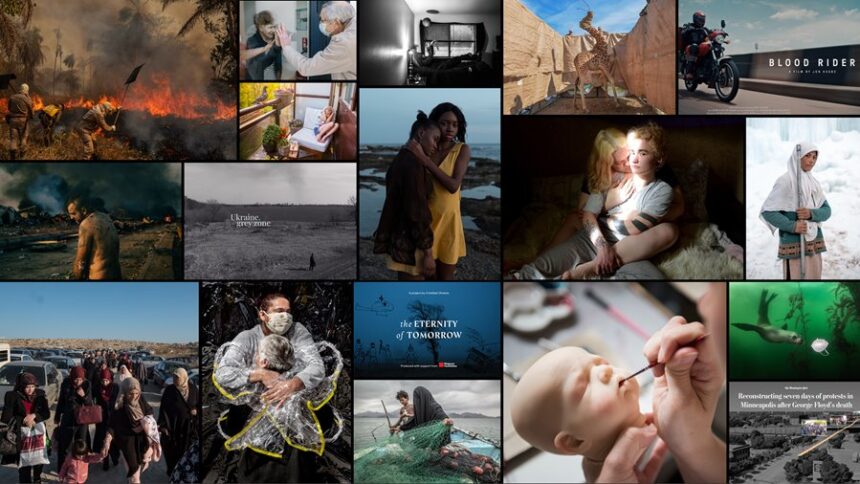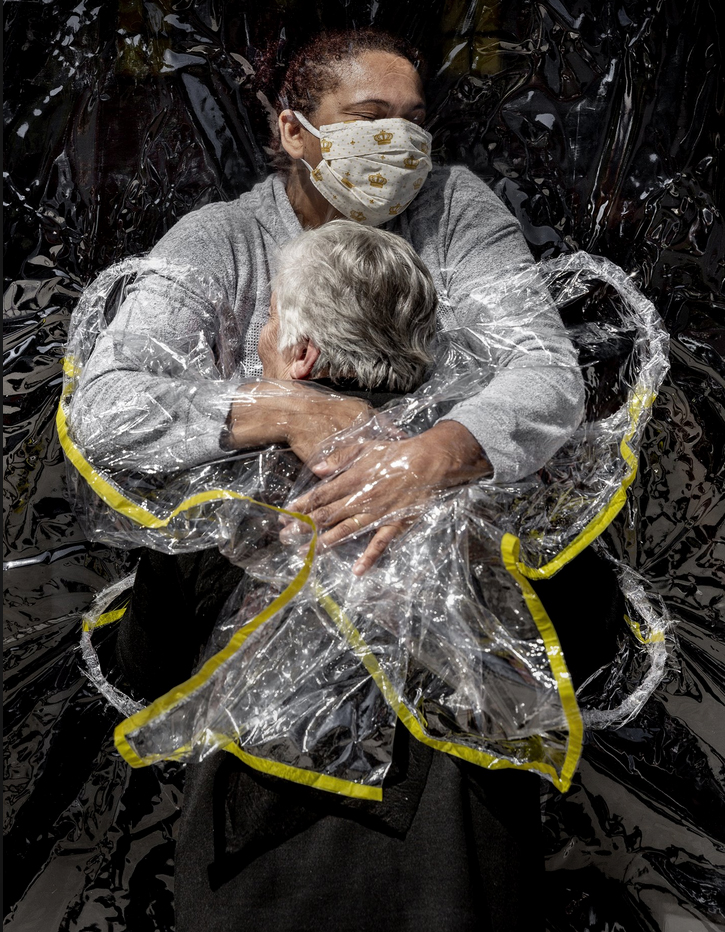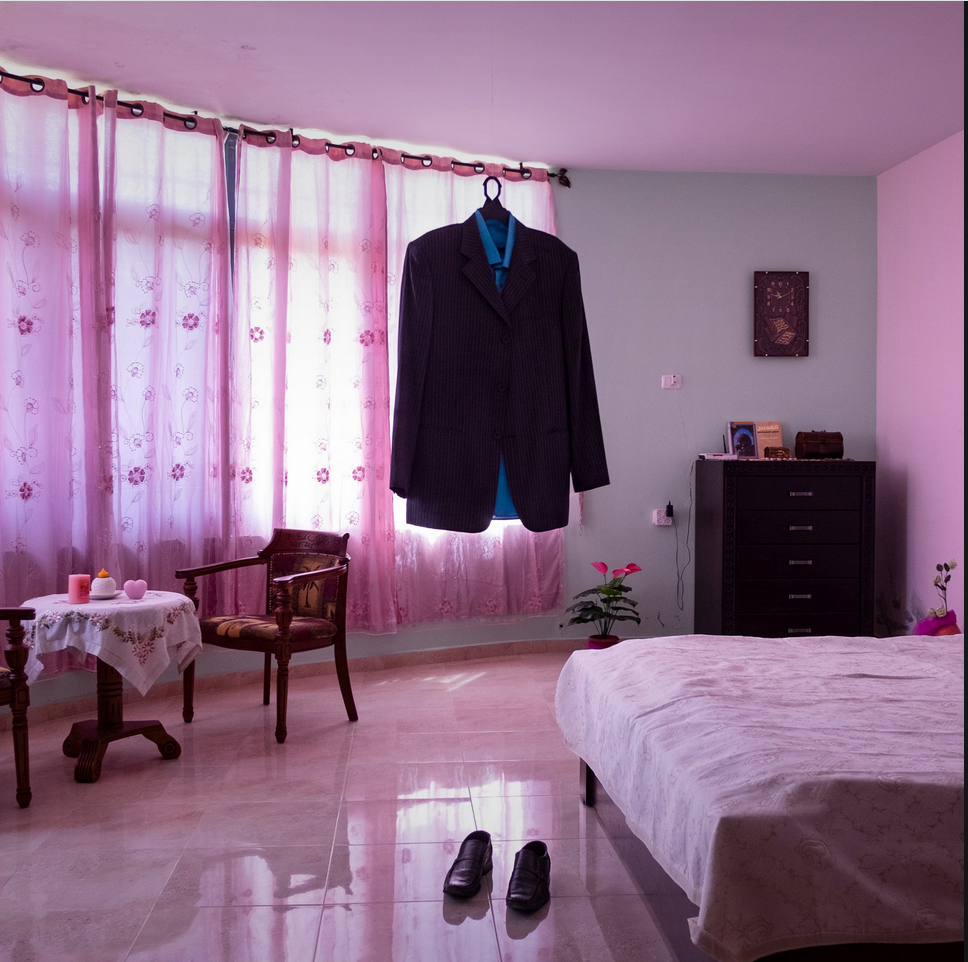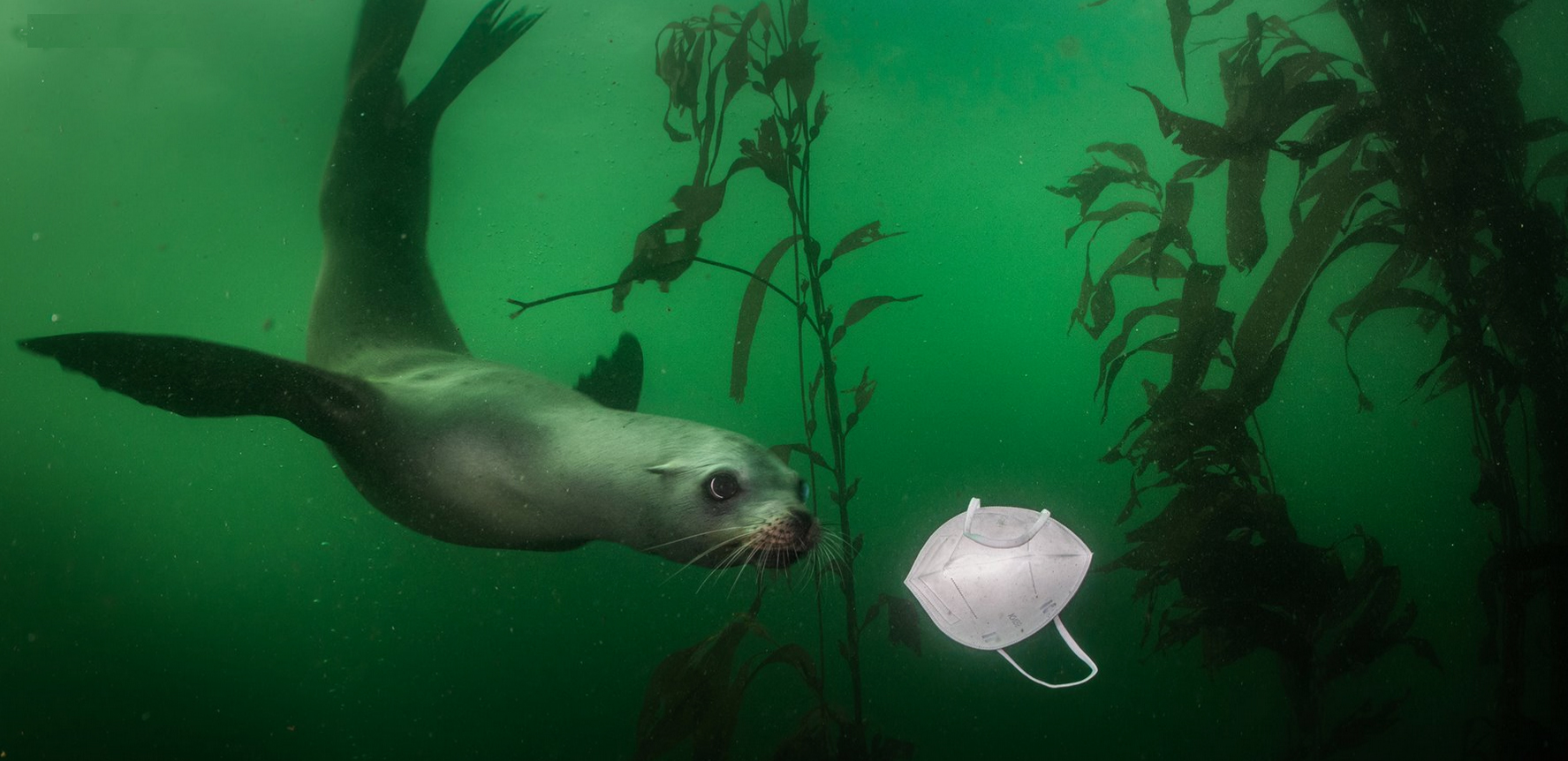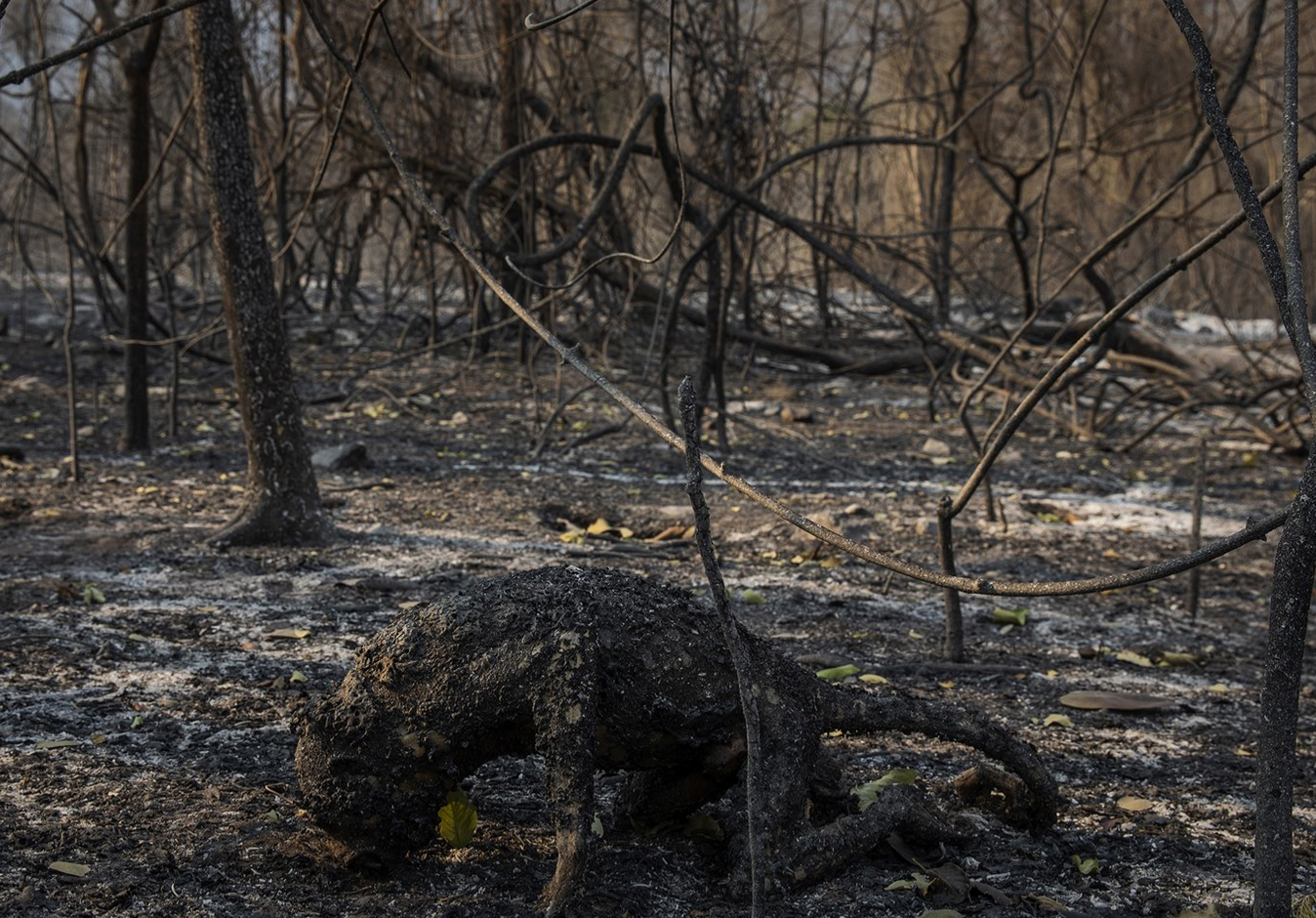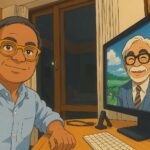World Press Photo of the Year 2021
05 August, 2020
Rosa Luzia Lunardi (85) is embraced by nurse Adriana Silva da Costa Souza, at Viva Bem care home, São Paulo, Brazil.
This was the first hug Rosa had received in five months. In March, care homes across the country had closed their doors to all visitors as a result of the COVID-19 pandemic, preventing millions of Brazilians from visiting their elderly relatives. Carers were ordered to keep physical contact with the vulnerable to an absolute minimum. At Viva Bem, a simple invention, ‘The Hug Curtain’, allowed people to hug each other once again. The new coronavirus had first appeared in Wuhan, China, at the end of 2019, and by January 2020 had begun to spread around the world. On 11 March, the World Health Organisation declared the COVID-19 outbreak a pandemic. The disease—transmitted mainly via close contact, respiratory droplets, and aerosols—could be fatal, and people over the age of 70 were one of the groups considered most vulnerable to the disease. Brazilian president, Jair Bolsonaro, dismissed claims about the severity of the pandemic and the danger posed by the virus, undermined quarantine measures adopted at state level, and encouraged Brazilians to continue working to keep the economy afloat. Brazil ended 2020 with one of the worst records globally in dealing with the virus, with some 7.7 million reported cases and 195,000 deaths.
Contemporary Issues, Singles, 1st Prize
12 February, 2020
Fatima and her son prepare a fishing net on a boat in Khor Omeira bay, Yemen.
Fatima has nine children. In order to provide for them, she makes a living from fishing. Although her village was devastated by armed conflict in Yemen, Fatima returned to resume her livelihood, buying a boat with money she earned from selling fish. The conflict—between Houthi Shia Muslim rebels and a Sunni Arab coalition led by Saudi Arabia—dates from 2014, and has led to what UNICEF has termed the world’s largest humanitarian crisis. Some 20.1 million people (almost two-thirds of the population) required food assistance at the beginning of 2020, with approximately 80 percent of the population relying on humanitarian aid. A Saudi coalition blockade on Yemen between 2015 and 2017 imposed import restrictions on food, medicines, and fuel. Resulting shortages exacerbated the humanitarian crisis. In many cases, conditions of near-famine were caused not so much by the unavailability of food, but because it became unaffordable, priced out of reach to most Yemenis by import restrictions, soaring transport costs due to fuel scarcity, a collapsing currency, and other man-made supply disruptions. In 2020 conflict intensified, and the situation was made worse by unprecedented heavy rainfall, which made some 300,000 people homeless, locust infestations that destroyed crops, and the effects of the COVID-19 pandemic.
World Press Photo Story of the Year
17 August, 2015
Nael al-Barghouthi’s suit remains hanging in his bedroom in Kobar, near Ramallah, Palestine. Al-Barghouthi’s wife, Iman Nafi, keeps all her husband’s clothes and belongings in place. Al-Barghouthi was arrested in 1978 after an anti-Israel commando operation. He was released in 2011, married Iman Nafi, but re-arrested in 2014 and sentenced to life imprisonment. He has spent more than 40 years in prison—the longest-serving Palestinian inmate in Israeli jails.
Nearly 4,200 Palestinian security detainees are being held in Israeli prisons, according to a February 2021 report by human rights organization B’Tselem. Some face sentences of 20 years or more. To visit a Palestinian prisoner in an Israeli jail, visitors have to overcome a number of different limitations resulting from border laws, prison regulations, and restrictions set by the Israel Security Agency (ISA). Visitors are usually allowed to see prisoners only through a transparent partition, and talk to them via a telephone receiver. Conjugal visits are denied and physical contact is forbidden, except for children under the age of ten, who are allowed ten minutes at the end of each visit to embrace their fathers. Since the early 2000s, long-term Palestinian detainees hoping to raise families have been smuggling semen out of prison, hidden in gifts to their children. Semen is smuggled in a variety of ways, such as in pen tubes, plastic candy wrappers, and inside bars of chocolate. In February 2021, Middle East Monitor reported that the 96th Palestinian baby had been born using sperm smuggled from Israeli prison.
Habibi, which means ‘my love’ in Arabic, chronicles love stories set against the backdrop of one of the longest and most complicated conflicts in modern history. The photographer aims to show the impact of the conflict on Palestinian families, and the difficulties they face in preserving their reproductive rights and human dignity. The photographer chooses not to focus on war, military action, and weapons, but on people’s refusal to surrender to imprisonment, and on their courage and perseverance to survive in a conflict zone.
Environment, Singles, 1st Prize
19 November, 2020
A curious California sea lion swims towards a face mask at the Breakwater dive site in Monterey, California, USA.
California sea lions (Zalophus californianus) are playful animals, native to western North America. With COVID-19 lockdowns in place across California, outdoor and natural beauty spots with plenty of wildlife became a popular focus for local travel. In many countries the wearing of face masks outdoors was obligatory. Similar destinations around the world became littered with abandoned masks. The BBC reported an estimated 129 billion disposable face masks and 65 billion throwaway gloves being used each month through the pandemic. Such personal protective equipment (PPE) can be mistaken for food by birds, fish, marine mammals, and other animals. PPE also contains plastic, and so contributes to the eight million tons of plastic that end up in the oceans every year. According to World Animal Protection, every year an estimated 136,000 seals, sea lions, and whales die from plastic entanglement. Surgical masks break down into millions of microplastic particles over time, which are eaten by fish and other animals, and therefore carry contamination back up the food chain, potentially also affecting humans.
Environment, Stories, 1st Prize
04 October, 2020
A howler monkey (Alouatta) is left carbonized by a forest fire that swept through the Santa Tereza farm, in the Paraguay River area of the Pantanal, in the state of Mato Grosso do Sul. The fires in the region were so intense that not even the fastest animals were able to escape the flames.
Nearly a third of Brazil’s Pantanal region—the world’s largest tropical wetland and flooded grasslands, sprawling across some 140,000 to 160,000 square kilometers—was consumed by fires over the course of 2020. According to Brazil’s National Institute for Space Research, there were triple the number of fires in 2020 compared to 2019. Fires in the Pantanal tend to burn just below the surface, fueled by highly combustible peat, which means they burn for longer and are harder to extinguish. The Pantanal, which is recognized by UNESCO as a World Biosphere Reserve and is one of Brazil’s most important biomes, is suffering its worst drought in nearly 50 years, causing fires to spread out of control. Many of the fires started from slash-and-burn farming, which has become more prevalent due to the weakening of conservation regulation and enforcement under President Jair Bolsonaro’s administration. The Brazilian Institute of the Environment and Renewable Natural Resources (IBAMA) has seen its funding reduced by around 30 percent. Bolsonaro has frequently spoken out against environmental protection measures, and has made repeated comments undermining Brazilian courts’ attempts to punish offenders. Environmentalists say that this is encouraging agricultural burning and creating a climate of impunity. Luciana Leite, who studies humanity’s relationship with nature at the Federal University of Bahia, predicts the total collapse of the Pantanal, if current climate trends and anti-environmental policies persist.
To see more winning photos and nominee’s click the below link
![]()

